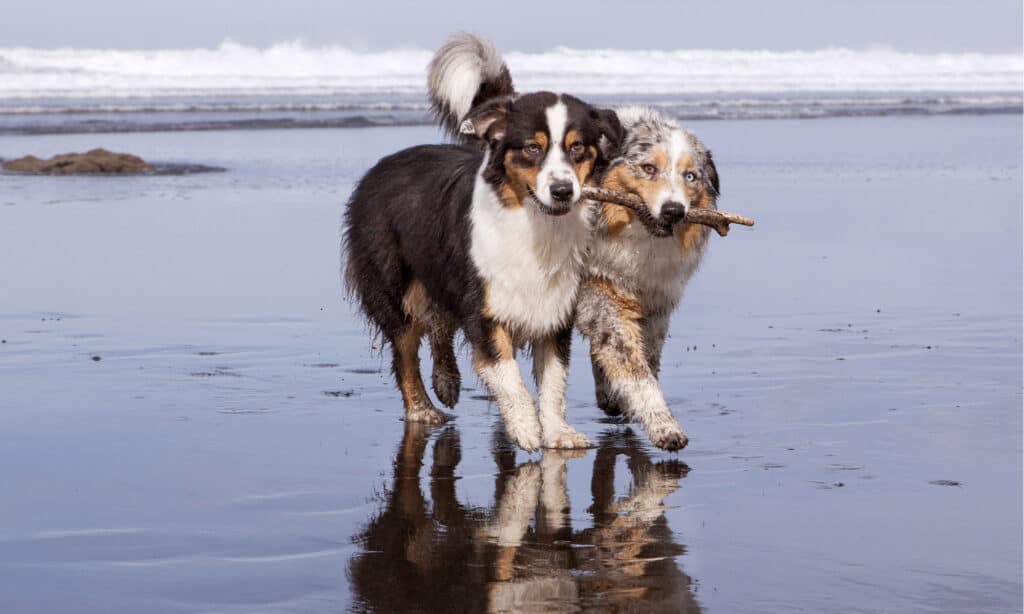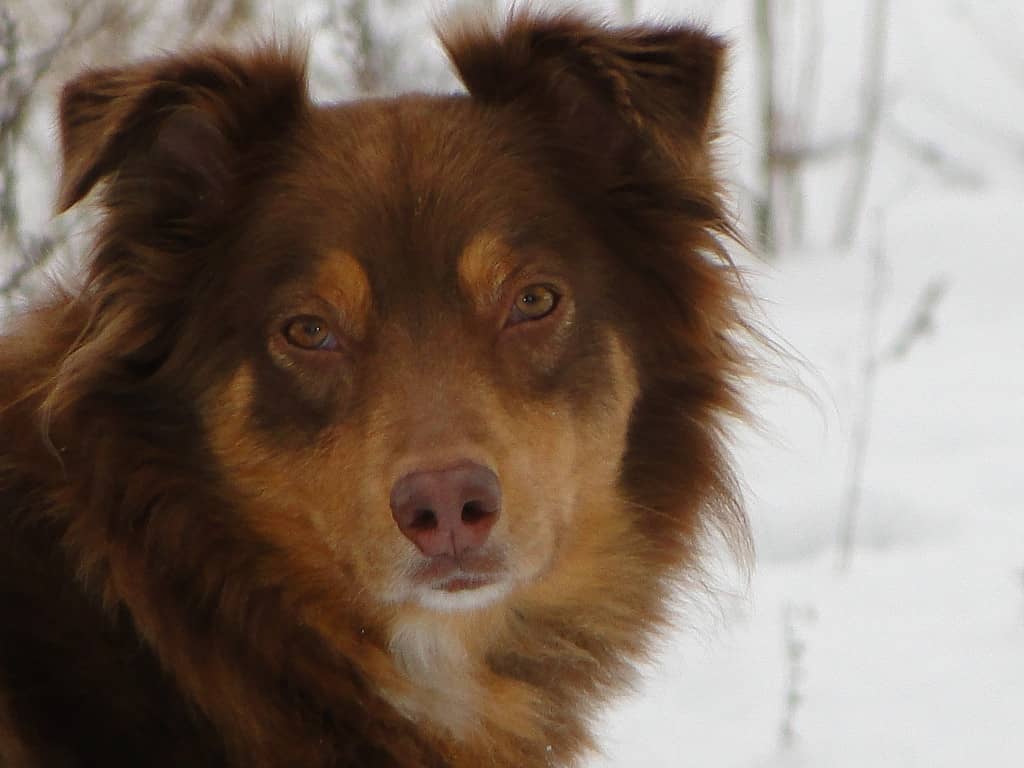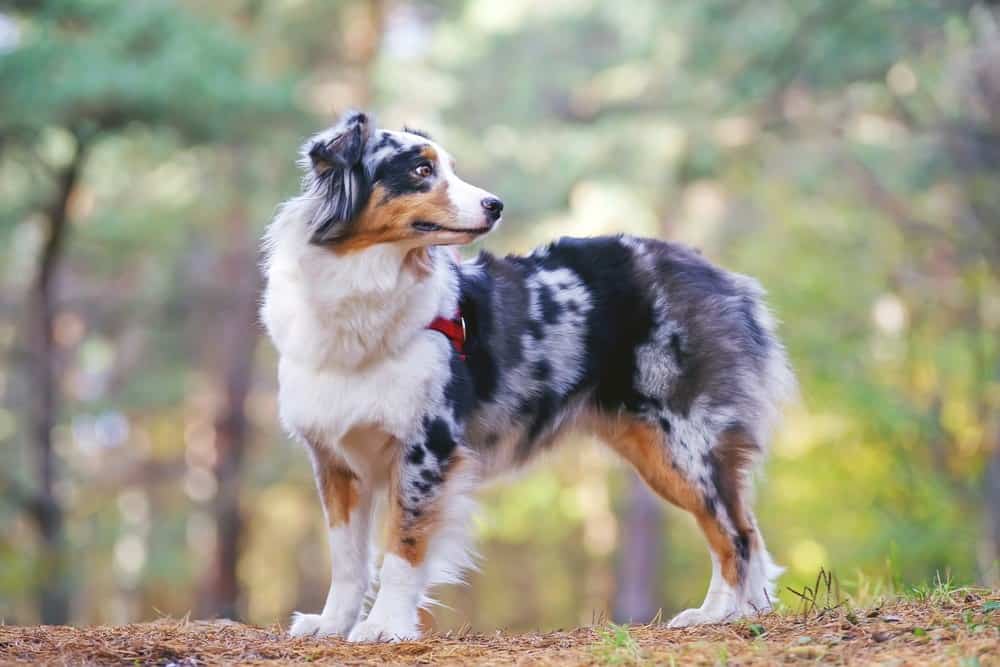
©
The Australian shepherd remains one of the most cherished dog breeds across the world. They have won over countless hearts far and wide. This breed is renowned for its exceptional intellect, devoted loyalty, and lively spirit. Australian shepherds have become a top pick among households and working environments alike. But, besides their versatility, it’s their rare Australian shepherd coat colors and intricate patterns that reveal their captivating beauty.

Besides their versatility, it’s their rare and unique coat colors, as well as their intricate patterns, that show their captivating beauty.
©gesango16/Shutterstock.com
Many individuals are familiar with the four acknowledged coat colors of Australian shepherds. These include black and white, red, blue merle, and red merle. However, the American Kennel Club (AKC) does not acknowledge certain coats. These include solid black, solid red, red tri, and red merle.
This blog post includes information on how certain genes play a role in determining rare Australian shepherd coat colors. We discuss how genes control the placement of patterns that modify how these dogs appear.
Solid Black Coat

The dominant KB gene prevents other coat colors, thus resulting in solid black fur, as seen in this Australian shepherd-lab mix.
©Michael Geyer/Shutterstock.com
An Australian shepherd with a solid black coat color is quite uncommon within its breed. The science behind why Australian shepherds with solid black coats are rare is quite complex. Multiple genes that play a role in expressing different hues and patterns determine the colors of these dogs. The dominant KB gene specifically prevents the display of other coat colors or designs, thus resulting in solid black fur. This dominant gene must be inherited from both parents for their offspring to have this same aesthetic.
Solid Red Coat

The solid red coat of an Australian shepherd is the rarest color.
©Appalousa / CC BY-SA – License
This Australian shepherd coat color, which ranges from deep reddish to lighter shades of red, is the rarest color. To create a solid red coat, breeders must strategically pair dogs with the ee recessive form of the E gene. Only if both parents contribute this unique gene will their offspring inherit that striking solid red coat color. The need for this specific genetic combination is why these pups are such a rare find.
Red Tri-Coat

The D gene is a contributing factor to red-tri coloration in Australian shepherds.
©Ryan Brix/Shutterstock.com
The red tri genetic makeup consists of a recessive gene called bb. It restricts any black pigmentation from developing, creating mixed tones of dark red. The D gene is another contributing factor to red-tri coloration in Australian shepherds. This particular gene has an effect on how intense a dog’s coat color appears as it works to dilute it.
In addition, the A locus gene results in regions of an Aussie’s fur pattern that showcases light-colored patches. These often come across as shades of copper or tan. And they compliment beautifully against their bright base coat hue.
Red Merle Coat

This genetic component gives a marbled appearance by creating intermingling pigmentation and lack of pigment patterns throughout their fur.
©Eudyptula/Shutterstock.com
The M gene determines the Australian shepherd’s distinctive red merle coat. This genetic component gives a marbled appearance by creating intermingling pigmentation and lack of pigment patterns throughout their fur. Specifically, the red merle variation consists of E Gene, which produces contrasting patches of deep reddish tones on lighter-mottled backgrounds.
Furthermore, the D gene is responsible for the red merle coat color through its ability to influence pigmentation intensity, and the A gene displays warm tan colors that enhance the overall appearance of the red merle coat.
The photo featured at the top of this post is © Melounix/Shutterstock.com
Ready to discover the top 10 cutest dog breeds in the entire world?
How about the fastest dogs, the largest dogs and those that are -- quite frankly -- just the kindest dogs on the planet? Each day, AZ Animals sends out lists just like this to our thousands of email subscribers. And the best part? It's FREE. Join today by entering your email below.
Thank you for reading! Have some feedback for us? Contact the AZ Animals editorial team.






